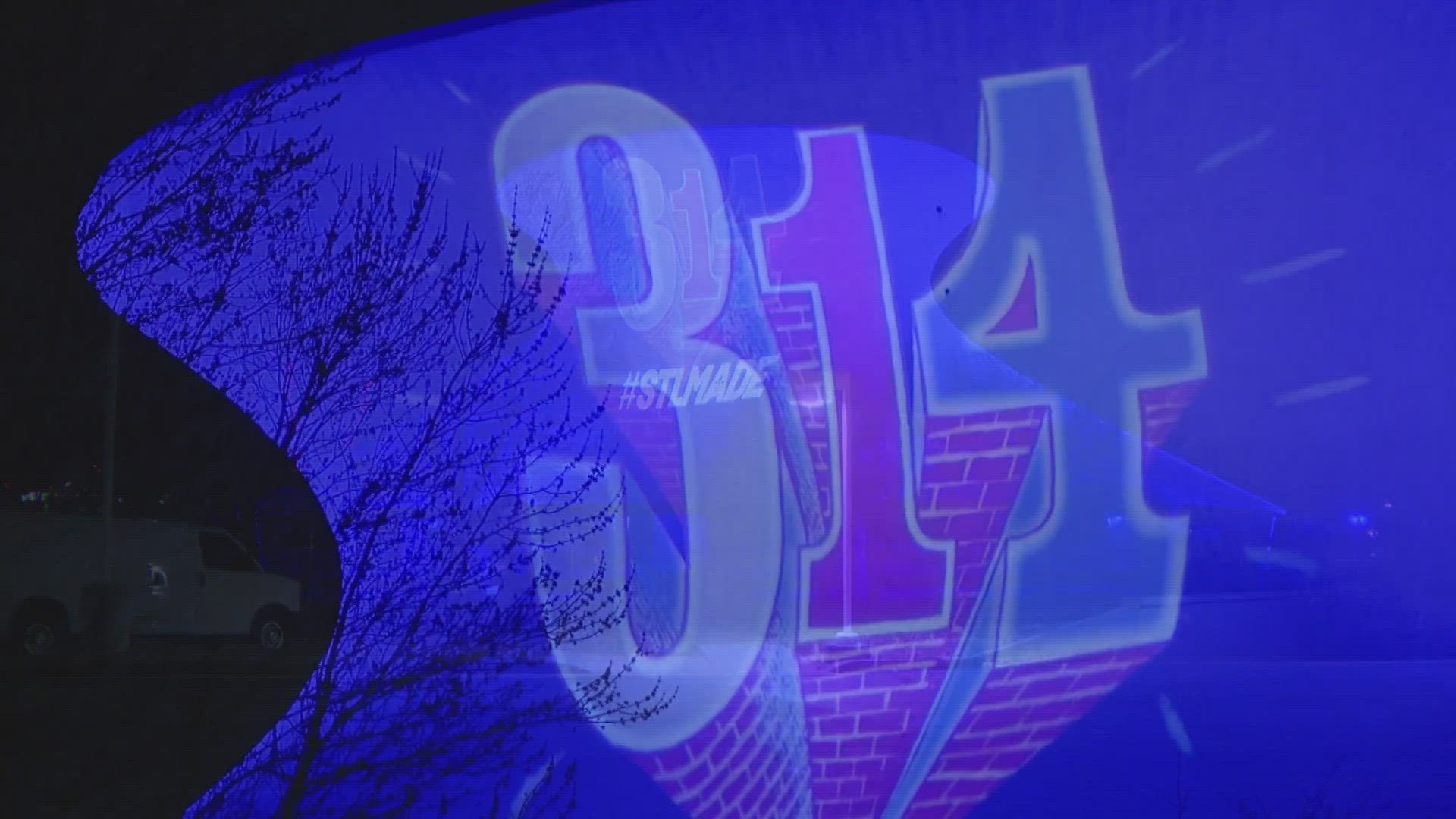ST. LOUIS — Pizza's introduction to St. Louis was anything but smooth.
"It is part pie, part hot sandwich, and a restaurant where it is baked is called a pizzeria (peetser-ee-ah)," a St. Louis Post-Dispatch article from 1947 said, explaining the then-newcomer dish to the city's food scene.
The newspaper was profiling the "New Italian Delicacy" made by Amedeo Fiore, owner of Melrose Pizzeria and the man widely credited with bringing pizza west of the Mississippi River. His culinary creation kicked off what we now know as St. Louis-style pizza.
The history of the unique pizza has been looked into at length. But the style's roots, like Fiore's, have been widely glossed over. Fiore was a Chicago native before making the move to Missouri, and he used a combination of influence from Chicago pizza and trips to Italy in his pursuit to bring the dish to St. Louis.
Fiore is just one of the many examples of how the Windy City played an integral role in developing St. Louis' (in)famous pizza style. But, that doesn't make it any less of a St. Louis creation. This pizza style, and culinary innovation as a whole, have been a story of cooperation much more than competition, despite what some recent critics have said.
"Doesn't even mention St. Louis"
A cracker-thin claim recently made by Bloomberg demonstrated some of the misconceptions people may hold about St. Louis-style pizza.
Pizzas with slim and crunchy crust filled edge-to-edge with toppings and cut into squares are reportedly hitting menus across the country, including New York, Seattle and Los Angeles, a recent article from the publication said.
But, Bloomberg didn't attribute the style to St. Louis.
“Nothing is more Chicago than a cracker-thin pizza,” Tony Scardino, owner of the Windy City pop-up Professor Pizza, told Bloomberg.
The article credits Chicago with thin-crust pizzas cut into squares, a credit that irked some vocal St. Louisians. The Riverfront Times, for example, took great offense.
"Bloomberg's story about the thin-crust pie that's all the rage in the nation's most influential food cities doesn't even mention St. Louis-style pizza," the St. Louis newspaper said in a recent article. "There's no, literally, no reason we shouldn't get credit for the trend now sweeping the coasts."
There is actually a reason Chicago would be given credit for cracker-thin pizza over St. Louis. Even though Chicago is known for its signature deep-dish pizza, "thin-crust pie" wouldn't exist today without the city's taverns.
How Chicago's tavern-style crust spawned St. Louis-style pizza
An estimated 5,000 taverns set up shop in Chicago in the same year prohibition was repealed. It was within these walls where the aptly named tavern-style pizza, the style Bloomberg reports is sweeping the nation, is said to have been created sometime between 1933 and the end of World War II.
The lightweight, square pieces were made to be served on cocktail napkins and easily passed through bar patrons.
Fiore, the aforementioned father of pizza in St. Louis, moved to the city from Chicago between 1935 and 1939, according to the St. Louis restaurant history website "Lost Tables." Fiore and his wife, Elizabeth, soon opened a restaurant named Melrose Cafe but didn't start offering the thin crust pizza until 1946, soon changing the restaurant's name to Melrose Pizzeria.
Even though Fiore advertised his pizza in local newspaper advertisements as "the ORIGINAL Neapolitan pizza," his creation was much more similar to Chicago's tavern style than anything from Italy.
"With scissors Amedeo Fiore ... cuts pizza into squares for serving," the 1947 article on Fiore said. "The squares, held with a paper napkin, are eaten from the hand."
Another indication of Fiore's Chicago inspiration was the ingredients of his crust. The St. Louis-style pizza we know today is usually baked without yeast. Fiore's was made with a "rich yeast dough."
The crust isn't the only aspect of St. Louis' pizza that was helped along by Chicago. The pizza's (in)famous cheese also has Chicago to thank for its creation.
Chicago: Provel's first legal owner
There are two things that make St. Louis' pizza iconic and controversial: the cracker-thin crust and the Provel cheese on top.
The origins of the unique cheddar, Swiss and provolone mixture were widely debated until then-Washington University student Caitlin Heim and the city's late longest-running food writer, Joe Bonwich, teamed up to get to the bottom of the mystery in 2012.
Heim worked to track down the original trademark of Provel and, with it, solidify the true story of its beginning.


Tony Costa, owner of the now-closed Costa Grocery store downtown, worked with a Chicago-based meat and cheese packing company to develop Provel. The company, J.S. Hoffman Co., filed a patent application in 1947 and was ultimately registered to the company in 1950.
Costa's Grocery would go on to become Roma Grocery Co., the distributor of Provel. The company was owned by Abe "Toots" Pezzani, uncle of the owner of Imo's, until his death in 2009.
Although the question of why J.S. Hoffman wanted to develop Provel in the first place was never answered, history shows the cheese wouldn't exist without the helping hand of the Chicago company.
The vast majority of food history has been built on countless helping hands like Hoffman's. Collaboration between ingredients, people and cultures is the reason why so many culinary dishes exist today. While St. Louis-style pizza is definitely unique in execution, the story of its cooperative creation is a tale as old as time.
Top St. Louis headlines
Get the latest news and details throughout the St. Louis area from 5 On Your Side broadcasts here.

